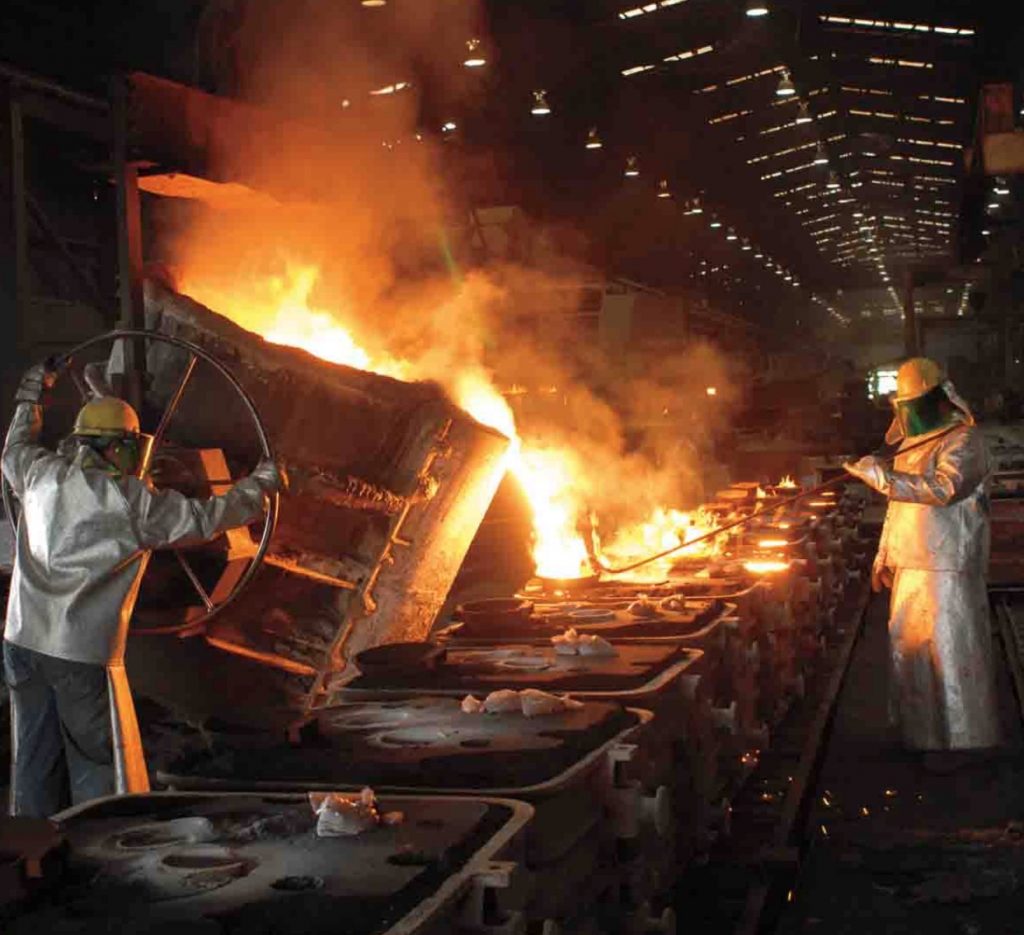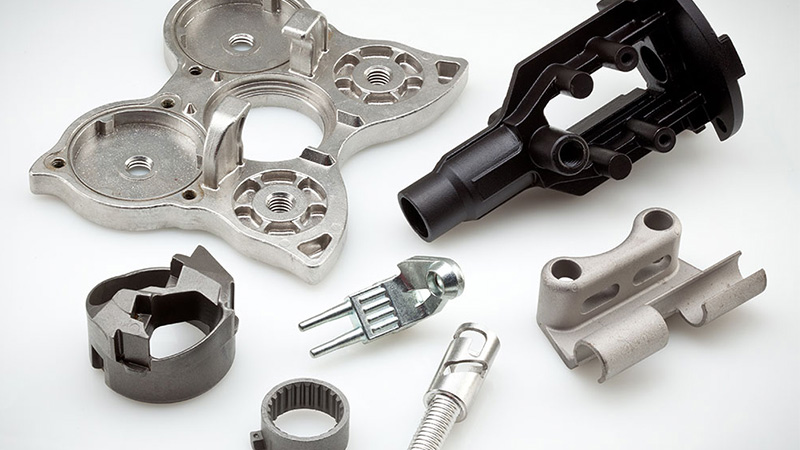Why Wisconsin Aluminum Foundry remains a trusted name in the casting industry
Wiki Article
The Role of Metal Casting ahead of time Manufacturing Technologies
Metal Casting have actually significantly influenced the development of manufacturing modern technologies. They offer one-of-a-kind layout flexibility, enabling the creation of complex geometries essential for various applications. Modern casting methods are being boosted by developments like 3D printing and automation. These advancements not only enhance performance yet also address difficulties in precision and sustainability. As sectors proceed to evolve, the function of Metal Casting continues to be essential fit their future. What exists ahead in this dynamic field?The Development of Metal Casting Techniques
As the need for precision and effectiveness in manufacturing has actually expanded, the development of Metal Casting strategies has gone through considerable transformation. Historically, Metal Casting began with easy methods such as sand spreading and lost-wax spreading, which allowed craftsmens to produce detailed forms. With time, advancements in technology introduced processes like die casting and investment spreading, boosting precision and minimizing waste. Wisconsin Aluminum Foundry. The intro of computer-aided design (CAD) and simulation software revolutionized the preparation stages, making it possible for makers to anticipate potential issues and optimize styles prior to production. Furthermore, the advancement of brand-new products, such as sophisticated alloys and compounds, has widened the scope of applications for Metal Casting. Automation and robotics have more polished casting procedures, enhancing uniformity and performance. As a result, the Metal Casting industry has actually adapted to meet the demands of modern manufacturing, concentrating on sustainability and innovation to continue to be competitive in an ever-evolving marketplace
Applications of Metal Casting in Secret Industries
The improvements in Metal Casting strategies have opened a vast array of applications throughout various industries. In the auto industry, Metal Casting are important for producing engine blocks, transmission housings, and various other important parts that need high strength and resilience. The aerospace market makes use of castings for detailed parts like generator blades and architectural components, making sure light-weight yet durable solutions for aircraft.
Additionally, the construction market uses Metal Casting for architectural components such as light beams and fittings, adding to the stability of structures and infrastructure. In the power market, castings play an essential duty in making parts for wind generators and power generation tools, boosting performance and dependability. In enhancement, the medical area gain from precision spreadings utilized in surgical instruments and prosthetics, showing the flexibility of Metal Casting throughout varied applications. This broad application highlights the significance of Metal Casting in contemporary manufacturing practices.
Benefits of Metal Casting in Modern Production
Metal Casting use countless benefits that substantially improve modern manufacturing procedures. One essential advantage is design versatility; Metal Casting allows for the production of intricate shapes and detailed geometries that are difficult or often tough to accomplish with other manufacturing techniques. This ability makes it possible for suppliers to enhance product styles for capability and efficiency.In addition, Metal Casting can support a broad variety of materials, including aluminum, iron, and steel, which can be customized to fulfill certain mechanical properties and corrosion resistance demands.

Cost-effectiveness is one more notable advantage; Metal Casting procedures can generate huge quantities of get rid of marginal material waste, therefore reducing production expenses.
The sturdiness of actors steel elements contributes to the longevity of items, lowering the need for constant replacements. Overall, the advantages of Metal Casting considerably add to efficiency, sustainability, and development within modern-day manufacturing environments.
Advancements Driving the Future of Metal Casting
While standard Metal Casting methods have offered the industry well for years, current technologies are poised to transform the area. Developments such as 3D printing innovation allow for rapid prototyping and the production of complicated geometries that were formerly unattainable. These advancements not just boost style flexibility yet additionally lower waste and shorten lead times. In enhancement, the combination of automation and robotics in casting processes is enhancing procedures, improving precision, and boosting employee safety. Additionally, the growth of brand-new alloys and composite materials is enabling the creation of more powerful, lighter castings tailored for details applications. Digital technologies, consisting Wisconsin Aluminum Foundry of artificial intelligence and equipment understanding, are maximizing casting criteria and predictive maintenance, driving better top quality control. Collectively, these advancements are pressing the borders of Metal Casting, cultivating greater effectiveness and sustainability in production, and positioning the sector for future growth and competitiveness.Difficulties and Solutions in Metal Casting Processes
As improvements in Metal Casting modern technology continue to reshape the market, different difficulties remain that producers must resolve to completely take advantage of these advancements. One substantial issue is the variability in product buildings, which can result in irregular quality and efficiency. This irregularity usually arises from changes in basic materials and handling problems. Additionally, the increasing prices of energy and materials posture monetary restrictions, pressing suppliers to look for a lot more efficient processes.To battle these obstacles, firms are significantly adopting automated systems and advanced simulation methods to boost precision and consistency. Carrying out high quality control measures throughout the production process also helps in finding problems early. Investing in research for different materials might lower expenses and boost sustainability. By attending to these challenges with cutting-edge services, the Metal Casting market can boost productivity and keep competitiveness in the evolving production landscape.
Often Asked Concerns
What Materials Are Frequently Made Use Of in Steel Casting Processes?
Common products utilized in Metal Casting procedures include light weight aluminum, iron, magnesium, and bronze. Each material possesses distinct properties that deal with various applications, boosting the flexibility and functionality of the last actors products in different markets.Just How Do Ecological Rules Influence Metal Casting Operations?
Environmental guidelines oblige Metal Casting operations to take on cleaner techniques and innovations, commonly raising production prices. Conformity may cause cutting-edge processes that lower waste and discharges, ultimately advertising sustainability within the Metal Casting sector.What Are the Security Procedures in Metal Casting Facilities?
Safety actions in Metal Casting facilities consist of appropriate air flow, personal safety tools, normal security training, equipment upkeep, and adherence to safety laws, ensuring a secure environment for workers while decreasing dangers associated with hazardous materials and processes.Exactly How Is Top quality Controlled in the Metal Casting Process?
Quality assurance in Metal Casting involves strenuous inspections, consisting of visual assessments, dimensional checks, and material testing. Adherence to industry standards and implementing high quality administration systems ensures that castings fulfill given demands throughout the production process.
What Is the Future Job Expectation for Metal Casting Professionals?
The future work expectation for Metal Casting specialists shows up appealing, driven by improvements in modern technology and raising demand throughout different industries (Metal Castings). Growth in automation and lasting practices will likely produce brand-new chances in this marketHistorically, Metal Casting began with simple methods such as sand casting and lost-wax casting, which allowed craftsmens to produce complex shapes. Over time, improvements in modern technology presented processes like die casting and financial investment casting, boosting precision and reducing waste. In addition, the clinical area advantages from precision spreadings made use of in surgical instruments and prosthetics, demonstrating the versatility of Metal Casting throughout diverse applications. Metal Casting offer numerous advantages that substantially improve modern production processes. Common materials made use of in Metal Casting procedures consist of aluminum, magnesium, iron, and bronze.
Report this wiki page